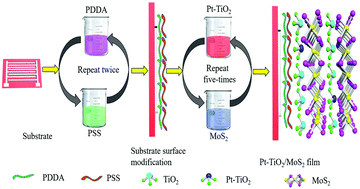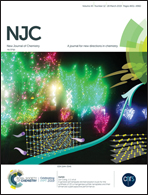Experimental and density functional theory investigation of Pt-loaded titanium dioxide/molybdenum disulfide nanohybrid for SO2 gas sensing
Abstract
A high-performance sulfur dioxide (SO2) sensor based on a platinum (Pt)-loaded titanium dioxide (TiO2)/molybdenum disulfide (MoS2) ternary nanocomposite is synthesized via layer-by-layer self-assembly. Various characterization techniques such as X-ray diffraction, energy dispersive spectrometry, scanning electron microscopy, transmission electron microscopy, high resolution transmission electron microscopy and X-ray photoelectron spectroscopy show the nanostructure, morphology and composition of the Pt–TiO2/MoS2 nanocomposite. The sensor exhibits a relatively high response value, outstanding selectivity, and good stability toward SO2 gas. Furthermore, Materials Studio is used to establish adsorbent models to calculate the energy, density of states and charge transfer based on density functional theory. This paper indicates that the Pt–TiO2/MoS2 sensor has great potential for the detection of SO2 with outstanding sensing ability.



 Please wait while we load your content...
Please wait while we load your content...